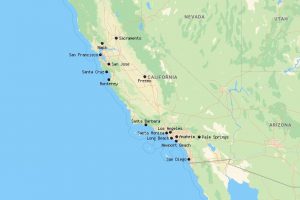Population changes trigger the redistricting for California cities and counties
Population changes over the past ten years will likely trigger reapportionment among county districts and city wards throughout California. In turn, this can significantly impact the election of county supervisors and city council members, state-wide.
Reapportionment requires studies be undertaken to determine if current city council districts (aka “city wards”) and county supervisory districts are still equal enough in population to satisfy certain legal requirements of the Voting Rights Act of 1965. Such requirements include the one man one vote rule and that no “packing” or “cracking” of racial or ethnic groups takes place.
Packing occurs when an ethnic or racial group is large enough to elect its choice of candidates in multiple districts, but the districts are drawn to push most of the members of the group into a single district.
Cracking, also known as “splitting”, takes place when a group that is the majority in a single district gets split up into multiple districts thereby making it very unlikely members of the split group could elect a candidate of their choice. Both packing and cracking are violations of Section 2 of the Voting Rights Act of 1965 as amended.
California Election Code sections (“§§”) 21601(c-d) and 21621(c-d), prescribe additional rules when redistricting cities. In order from highest to lowest priority: 1) the districts must be contiguous. 2) Communities of Interest must not be split into separate districts, 3) districts must be easily identifiable by residents 4) the district must be geographically compact, and 5) must not favor one political party over another. California Election Code §21500(c), which applies to counties, states the same and adds that member cities within the county not be split into separate supervisory districts to the extent practicable.
If a study determines re-districting is necessary, re-drawing of precincts (aka Voting Tabulation Districts or VTDs) may also be necessary to ensure precincts reflect the boundaries of the newly drawn wards and supervisory districts.
Common Questions Regarding the Goals and Requirements for Redistricting
- Do the Federal Voting Rights Act and California FAIRMAPS Act protect only communities of color and/or Hispanic heritage?
- What tests can prove or disprove redistricting has violated the Federal Voting Rights Act without having to prove intent to violate the Act?
- What is the correct measure of a population (e.g., census data of population, census data of citizenship, registered voter data)?
- How close to equal size must districts be in order to meet the one man one vote requirement while not contravening permissible state policies?
- How do we define contiguous?
- What factors help define “common social and economic” interests?
- What makes a district geographically compact or not compact?
- How do we avoid results that look like?
Obtain Free Guide on Redistricting California Cities and Counties
To learn the purpose and method requirements for redistricting, the timeframe for redistricting California cities, timeframe for redistricting California counties, please contact USgeocoder to obtain a copy of the Guide to Understanding Requirements for Redistricting California Cities and Counties.
USgeocoder assists cities and counties with redistricting. It runs workshops and provides technical support, demographic and cartographic knowledge. Looking for help to redistrict your city or county? Give USgeocoder a call at 1-888-938-6732 or fill out an online request form.
To find out more about the political districts, elected officials and Census geography information for a particular address, try USgeocoder’s Free Online Live Demo!


 Use USgeocoder Online Lookup Tool to Find Municipality and Parcel Data
Use USgeocoder Online Lookup Tool to Find Municipality and Parcel Data